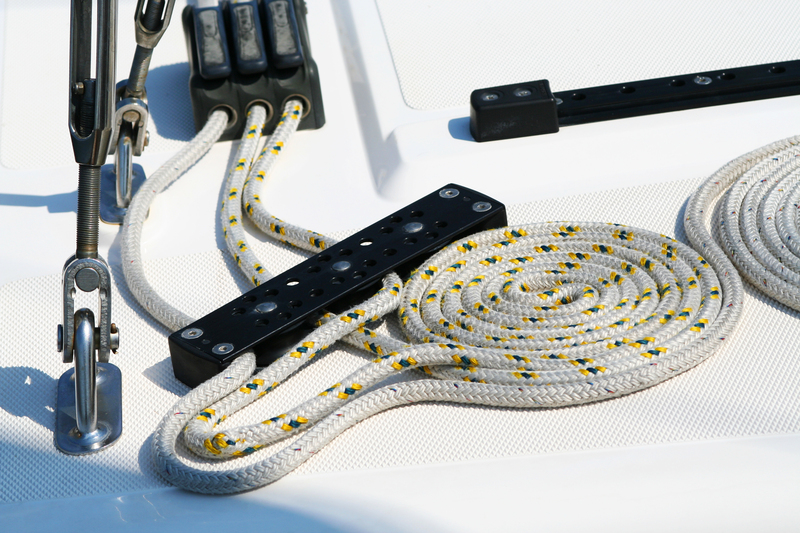Practical Advice for Moving Beds and Mattresses
Posted on 22/06/2025
Practical Advice for Moving Beds and Mattresses
Moving from one home to another can be stressful, especially when it comes to transporting bulky furniture such as beds and mattresses. These are some of the largest and most awkward items to handle during any relocation. Whether you're going across the street or moving to a different state, moving beds and mattresses safely and efficiently should be a top priority. This comprehensive guide offers practical advice for moving beds and mattresses, covering preparation, packing tips, transport options, safety, and aftercare. Let's make your move smoother and your bedroom setup effortless!

Why Moving Beds and Mattresses Can Be Challenging
Beds and mattresses are not only heavy but also awkward to maneuver, especially through narrow hallways, stairs, and tight doorways. Mattresses can bend, but their bulk makes them difficult to grip and move. Bed frames often need disassembly, adding another layer of complexity. It's crucial to approach this task with the right strategy to prevent damage to your furniture--and to yourself!
Common Issues Faced:
- Injury Risks: Back injuries, strains, and accidents can occur without proper lifting techniques.
- Damage to Furniture: Scratches, dents, or tears can ruin your bed or mattress during transport.
- Wall and Doorway Scrapes: Maneuvering large furniture can scuff walls and door frames.
- Weather Issues: Rain and moisture can permanently damage mattresses and upholstery.
Understanding these challenges is the first step towards a successful bed and mattress move.
Step-by-Step Guide: How to Move Beds and Mattresses Safely
1. Preparing for the Move
Preparation is key. Start by assessing your bed and mattress--take measurements and note any special features such as headboards, storage drawers, or delicate frames. Clear a path from your bedroom to the exterior door to make moving safer and easier.
- Measure doorways, stairs, and hallways to ensure your bed and mattress will fit through all necessary passageways.
- Remove bedding and accessories: Strip your mattress of all sheets, covers, pillows, and protectors. Wash and pack these items separately.
- Clear the area: Move smaller pieces of furniture out of the way to create an unobstructed route.
2. Disassembling Your Bed Frame
Most beds--whether it is a king, queen, twin, or full--need to be disassembled before moving. Disassembly makes beds lighter, protects components, and facilitates easy transport.
- Gather your tools: You will need a screwdriver, Allen wrench, or power drill, depending on your bed frame's hardware.
- Photograph your bed for reference: Take pictures before and during disassembly to help you remember how everything fits together.
- Remove slats, rails, and headboard carefully - keep all screws and bolts together in a labeled plastic bag.
- Label each piece using masking tape to remember what goes where during reassembly.
3. Packing and Protecting Mattresses and Bed Components
Mattresses are vulnerable to dirt, moisture, and punctures. To prevent undesired outcomes:
- Invest in Mattress Bags: These durable plastic covers shield your mattress from dust, water, and tears during the move. They are inexpensive and widely available online or in stores.
- Use moving blankets: Wrap bed rails, boards, and slats in moving blankets to prevent scratches and dents.
- Tape securely: Use packing tape to seal bags and blankets, but never tape directly onto the mattress or wood--it can leave sticky residue or cause damage.
Pro tip: For specialty mattresses such as memory foam, latex, or hybrid designs, always check the manufacturer's recommendations for storage and moving.
How to Move a Mattress: Practical Tips
1. Moving Without Professional Movers
Not hiring movers? That's okay. Moving beds and mattresses without professional help is feasible if approached carefully. Here's how:
- Ask for assistance: Mattresses are heavy and awkward. Always move them with at least one helper.
- Use lifting straps or dollies: A mattress sling or heavy-duty straps can help distribute the load, while furniture dollies are perfect for rolling a bundled mattress down hallways.
- Bend, don't fold: While foam mattresses are flexible, traditional spring mats should not be folded as this can cause irreversible damage.
- Slide when possible: If space allows, gently slide the mattress along the floor rather than lifting and carrying the entire way.
2. Transporting in a Vehicle
Choosing the right vehicle is crucial when transporting your mattress and bed frame. The best option is a pickup truck, van, or moving truck with sufficient cargo space. If none is available, follow these guidelines:
- Never strap a mattress to your car roof unless absolutely necessary. If you must, ensure it is double-bagged, tightly strapped, and the trip is short and slow, avoiding highways or fast speeds. Mattresses can act as sails, risking damage or accidents.
- Place flat if possible: Keep the mattress flat in the vehicle to prevent bending and to maintain the shape of the springs or foam.
- Straighten and stack neatly: For multiple items, stack heavier bed parts first, then place the mattress on top within its bag.
3. Protecting Against Weather and Dirt
Mistakes with weather and moisture can permanently ruin a mattress. Take these precautions:
- Double-bag in rain or snow: Two layers of plastic help prevent leaks or moisture seeping in.
- Move quickly and efficiently: Don't leave the mattress exposed for long periods--coordinate with helpers to reduce time outside.
- Dry immediately if wet: If your mattress gets damp, dry it quickly with towels and a fan to prevent mold.
How to Move a Bed Frame: Detailed Instructions
1. Dismantle Efficiently
- Remove and wrap individual pieces: Bundle rails, headboards, footboards and slats together. Use protective blankets or bubble wrap.
- Secure screws and small parts: Place all screws, washers, and hardware in a labeled bag and tape it to a large frame component.
- Protect delicate finishes: For wood or upholstered frames, extra layers of protection are necessary. Wrap all surfaces carefully to guard against nicks and scratches.
2. Loading and Unloading
- Line the vehicle bed: Place moving blankets or pads under bed frame pieces to prevent sliding and scratching.
- Lay flat: If possible, lay slats and boards flat to avoid warping or breaking.
- Secure in place: Use straps or ropes to anchor all bed parts and mattress securely in the moving vehicle.
Professional vs. DIY: Pros & Cons for Moving Beds and Mattresses
When to Hire Moving Professionals
- If you have heavy or specialty beds (such as adjustable frames, canopy beds, or antique wooden beds).
- Long-distance moves or tricky staircases and tight spaces.
- If you lack the physical strength or help required to move the bed and mattress safely.
Benefits of Professional Movers:
- Expert handling of large and awkward furniture.
- Proper packing and protection materials are included.
- Liability insurance and damage coverage.
DIY Tips for Success
- Gather as many helpers as possible.
- Invest in basic moving equipment (straps, dollies, plastic mattress bags).
- Follow an organized plan--disassemble first, then pack, move, and reassemble in order.
- Label everything for smooth reassembly.
Reassembling and Setting Up Your Bed and Mattress
Unpacking
- Remove all protective covers--do this carefully to prevent cutting or tearing the fabric or frame.
- Clean if needed: Wipe down bed components and air out the mattress before setup, especially if it was exposed to dirt during the move.
Reassembly Process
- Use photos and labels: Refer back to your pre-disassembly pictures and labeled parts.
- Follow instructions: If your bed came with assembly instructions, use them for proper structure and safety.
- Check stability: Tighten all screws and bolts securely, and ensure there is no wobbling or instability.
Take time to ensure everything is correctly assembled--your bed's stability and your comfort are worth the care!
Special Considerations: Moving Different Mattress Types
Memory Foam Mattress
- Never fold sharply: Memory foam can crack or lose structure.
- Protect from heat: Excessive heat inside hot moving trucks can degrade foam quality.
Spring and Hybrid Mattresses
- Keep upright or flat: Avoid bending, which can dislodge springs.
- Handle gently: Especially older springs, which can puncture fabric with excessive pressure.
Latex Mattresses
- Don't fold: Latex is heavy and floppy--keep it flat and well-supported during the move.
- Double-bagging is recommended: Heavy weight can tear single bags.
Adjustable Beds
- Read the manufacturer's guide: These beds have electric motors and parts that require careful handling.
- Remove all electronics and non-fixed components before transport.

Frequently Asked Questions About Moving Beds and Mattresses
Can I Move a Bed Frame Without Taking It Apart?
It's rare, but possible with some twin or single bed frames. However, most bed frames are too large to fit through doorways when fully assembled. Taking them apart protects both furniture and your home.
How Do I Dispose of an Old Mattress When Moving?
- Check with your local waste disposal or recycling centers.
- Many cities offer mattress recycling services--some retailers also haul away old mattresses when delivering new ones.
- Never leave mattresses on the curb unless it's permitted and scheduled for pickup.
How Do I Prevent Mattress Damage During a Move?
- Always use a protective plastic bag.
- Keep mattresses off rough or dirty surfaces.
- Transport flat when possible and avoid stacking heavy objects on top.
Conclusion: Stress-Free Moving for Beds and Mattresses
Successfully moving beds and mattresses is all about preparation, protection, and organization. By applying these practical strategies--measuring entryways, disassembling your bed frame, using proper packing materials, enlisting help, and paying close attention to aftercare--you'll ensure your bed arrives at your new home in excellent condition and is quickly ready for restful nights. For those with unique mattress types or complex bed frames, extra caution and attention to details are essential.
Whether you choose to hire professionals or tackle the move yourself, use these practical tips for moving beds and mattresses to simplify the process, avoid common mistakes, and minimize stress. With the right approach, you can have a seamless moving experience and sleep soundly in your new space!





